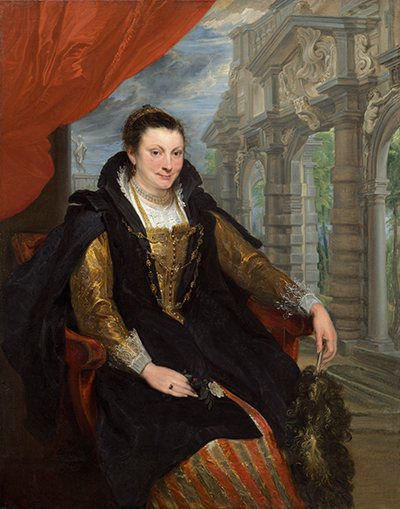This portrait captures the firm friendship between protégé Anthony van Dyck and his master, Peter Paul Rubens
The painting captures a complementary portrayal of Isabella Brant, Rubens' first wife. The work was completed in 1621 which was shortly after the artists' extended period of co-operation and collaboration. This was intended as a gift by Van Dyck to his close friend, with a long trip to Italy coming up shortly that would likely separate them for an extended period.
Isabella herself featured in several artworks by both of these artists, including a detailed drawing by her husband. Whilst that was a relatively simple sketch that would have taken just a few hours, the painting that we find here is much more complex. Van Dyck features an elaborate background of architectural flourishes as well as considerable detail in the foreground too.
It has been reported that the recipient of the painting was delighted with its artistic qualities as well as touched by the gesture on a personal level. Van Dyck has adapted his version from several similar artworks by Rubens, adding his own twist on a style that he already knew his master was fond of. This was certainly not unusual, with their styles frequently overlapping during this period of close co-operation.
Such were the similarities between their styles during this period that many initially attributed this painting to Rubens himself. Indeed many purchased this piece believing it to be by the great master, with the attribution to Van Dyck coming as recently as 1976. Modern scientific testing has ensured that such decisions are now far more accurate and reliable than was previously the case.
The setting for this painting is Rubens' mansion which boasted considerable Italian influence which can be seen in the background of this painting. The artist had placed several sculptures around his garden and also included architectural flourishes that oozed respect for the Italian Renaissance of centuries earlier.




